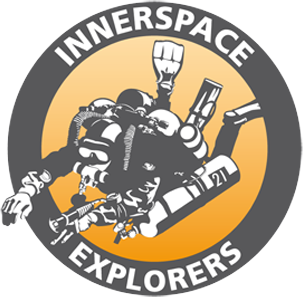 |
| | | |
|
Basics of Exploration (BOE)
Prerequisites

- Must be 14 years old and above.
- Must be a certified diver from a particular scuba training organization.
- Must be able to swim 15 m on a breath hold.
- Must meet the general fitness level for the sport
Purpose
The ISE Basics of Exploration is a class dedicated to cultivating comfortable, competent and confident divers that do not impact the environment. It allows them to maximize aquatic fun and safety. This course is also to prepare them for continuation in ISE technical, cave and wreck courses. It also builds a solid foundational skill level for divers, so as to be able to undertake all sorts of future advance scuba training easily.
Duration
This class will be conducted over a duration of generally 2.5 - 3 days.
Limits
- Student to instructor ratio will not exceed 5:1 in all in-water and surface sessions.
- Maximum training depth of 20 m.
- No decompression.
- No overhead environment (i.e caves).
Price
Tuition of 500 € per student + instructor's travel and diving expenses. (to be shared equally amongst all students)
Academic Topics
- Structure of ISE
- General diving procedures
- Buoyancy & Trim
- Equipment configuration
- Propulsion techniques
- Situational awareness
- Team awareness
- Communications
- Breathing gases overview
- Dive planning
- Gas management
Land Drills
- Dive team protocols
- Equipment fitting
- Propulsion techniques
- Foundational skills
- Valve drill
- Safety drill
- Pre-dive sequence
- Surface marker deployment
Equipment Recommendations
Students can use ANY equipment for the course. These are the highly recommended equipment for the class. Please email the instructor should you have further enquiries.
- Tank/s: Students should use single or double tanks. Double tanks setup requires a dual outlet isolator manifold, which allows the use of two first-stages.
- Regulators: For single tank setup, the first stage must provide a second stage on a 2 meter hose, and another on a hose not exceeding 60 cm, attached with a shock cord on the mouth piece. It must also provide a pressure gauge on a hose not exceeding 60 cm, and inflation for a buoyancy compensator and dry suit (where applicable). For double tank setup, one first stage must provide a second stage on a 2 meter hose and inflation for buoyancy compensator. The other must provide a second stage on a hose not exceeding 60 cm, attached with a shock cord on the mouth piece. It must also provide a pressure gauge on a hose not exceeding 60 cm, and inflation for dry suit (where applicable)
- Backplate: A rigid and flat platform, of metal construction held to the diver by one continuous piece of nylon webbing. This webbing should be adjustable through the plate with triglides to hold positions, and a buckle to secure the system at the waist. A crotch strap attached to the lower end of the plate and has a loop to pass the waist band through to secure the system. A knife sheath should be attached at the waist and will be adjusted beside the crotch strap when ready. This webbing should support five D-rings; 1 on the left, and 1 on right shoulder strap, both approximately the collar bone level. 2 on the crotch strap with one at the front and one at the buttocks. The shoulder straps should have small rubber bands to hold the back-up lights. The system should have no unnecessary components.
- Buoyancy Compensator Device: The buoyancy compensator device should be back-mounted and streamlined with only one inflator. There should be no bungee cords of any sort on the buoyancy cell. The lift should not exceed 25 kg for doubles, and 18 kg for singles. Wing size and shape should be appropriate to the cylinders used during training.
- At least one depth measuring device.
- At least one time keeping device.
- At least one knife and line cutting device.
- At least one low volume mask.
- One pair of non split, rigid fins.
- One underwater notepad.
- One surface marker.
- One spool of at least 30 meters of line per diver.
- One exposure suit that is appropriate for the training environment and water temperature.
|
|
|
|
|
|
|
|
| | | |
|
|
 |
|

